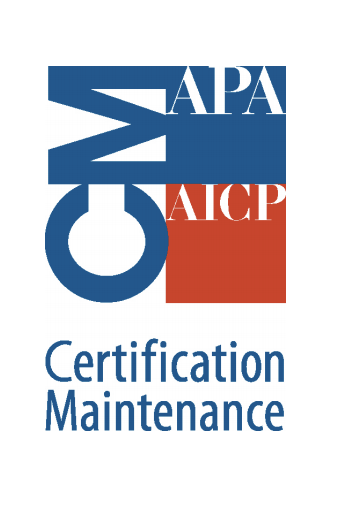The National Hazard Mitigation Planning Program, in partnership with the Emergency Management Institute (EMI), offers a suite of fundamental trainings designed to help state, local, tribal and territorial governments create effective hazard mitigation plans that meet FEMA’s requirements and reduce risk in their communities. As each of these audiences has different requirements, each training is specifically tailored to them.
Additionally, the program offers several advanced trainings and technical assistance related to pertinent areas in hazard mitigation planning. These range from webinar recordings to on-demand workshops.
Search Trainings

Désolé, il n'y a pas eu de résultats basés sur vos sélections de filtres.
Veuillez réinitialiser le filtre ou modifier vos sélections et réessayer.
AICP Credits
Courses are eligible for American Institute of Certified Planners Certificate Maintenance in addition to other webinar or in-person workshops. Find eligible options by using the “CM Search” section on APA and searching for "Federal Emergency Management Agency".

Members of the American Planning Association’s American Institute of Certified Planners can earn Certification Maintenance credits for many of FEMA’s mitigation planning trainings, including IS-350, L/K 318and IS and L-329. When credits are available, they are noted at the end of an activity description. More information can be found at planning.org/cm.

The mitigation planning process is slightly different for each state and local, tribal and territorial government. Regardless of the plan type, there are four core steps in completing a hazard mitigation plan or plan update. View the Create a Hazard Mitigation Plan page for resources to support mitigation plan development.
Tools and Resources
- HAZUS: A risk modeling system that estimates the physical, social, and economic impacts from earthquakes, floods, hurricanes, and tsunamis.
- National Risk Index: An online modeling application that visually depicts risk from 18 natural hazards in addition to socioeconomic and built environment factors. The Index calculates a baseline risk measurement for each United States county and U.S. Census tract to help communities better understand their natural hazard risk.
- A Guide to Supporting Engagement and Resiliency in Rural Communities discusses outreach and engagement activities, including mitigation planning, that address rural communities’ needs and considerations.
External Resources
Hazard mitigation planning training tools and resources from FEMA partners.
- American Planning Association (APA) “Planning, Mitigating, and Advocating for Community Resilience”: This free course, developed with input from FEMA, helps community planners know their role in hazard mitigation. It shows how mitigation planning boosts community resilience. This course also covers how to use planning tools as mitigation actions. Community planners will learn how to engage with the planning process. They will also learn how to work with their emergency management colleagues, help assess risk, and advocate for a more resilient future. This course is eligible for 1.75 CM credits for American Planning Association members of the American Institute of Certified Planners (AICP).

